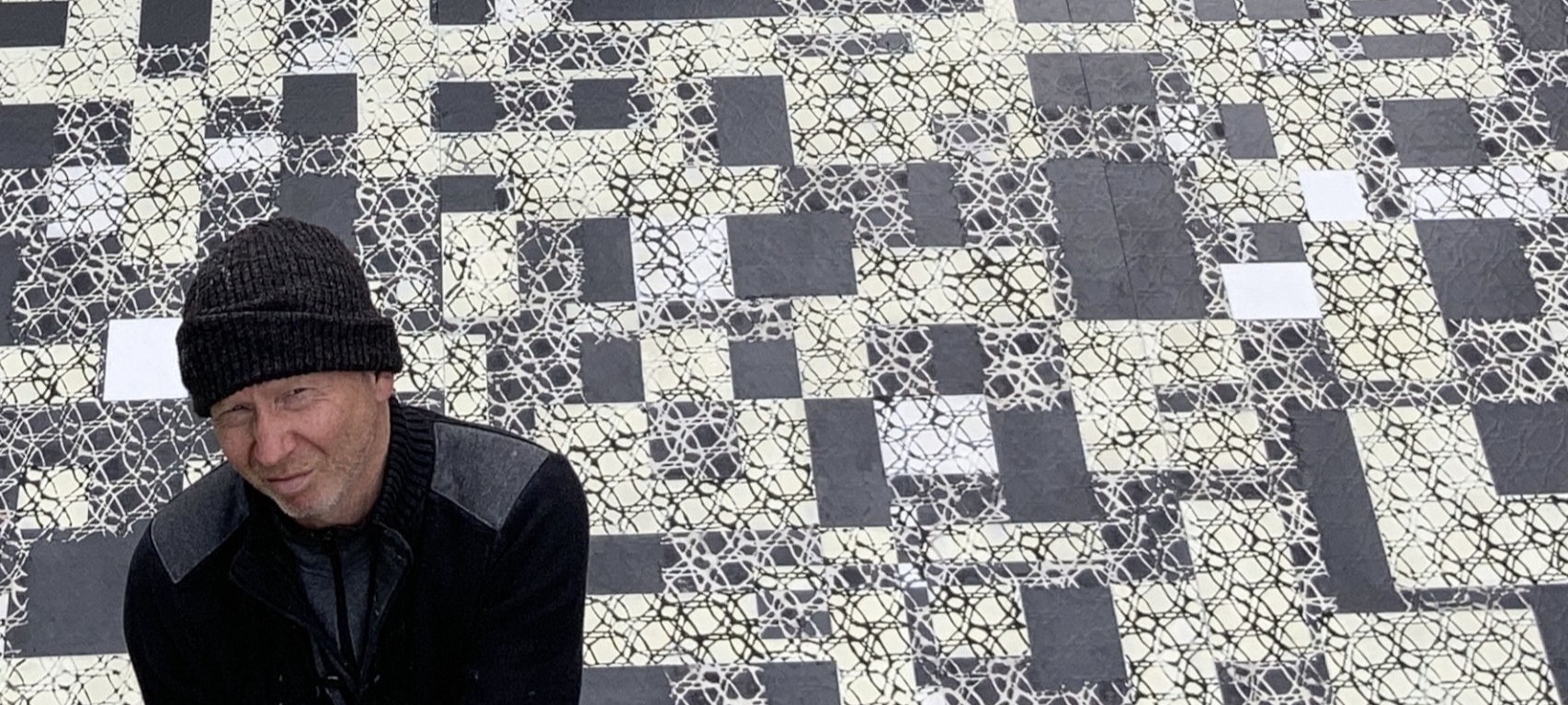

Artist Gregor Harvie uses his creative practice to engage and inspire diverse audiences, tackling the most complex and fundamental questions of our time. Academically trained to the highest level in art, architecture and science, he works collaboratively with experts to create bodies of work that are seductive and engaging installations and rigorous investigations of their subjects.
Gregor originally qualified as an architect and has a BSc in architectural studies and a BArch. He went on to study for a post graduate diploma in Fine Art from the City & Guilds of London Art School where he was awarded the de Laszlo Foundation Prize for Portraiture. He has a PhD in computational fluid dynamics, and is also the creator of Designing Buildings, an online collaborative knowledge-sharing platform used by 7 million people a year.
Gregor has created art installations and has had solo shows in London and Scotland and has shown work in numerous group shows, and art fairs. His artistic practice has included painting, video animation, creative writing, debate, educational outreach, computer modelling, AI and kinetic art.
In 2012, Gregor began the search for a new subject for his artistic practice, and settled on fundamental physics as the most complex, challenging and far-reaching subject of them all. He began a long period of research and made the decision to leave London for a fresh start. In 2015 he bought a rundown manse on a small island in Scotland. This required major renovation to breathe new life into the tired Victorian building and to create a large studio.
Superposition
Gregor is nearing completion of an art installation exploring the science behind quantum technologies. Commissioned by the Scottish Funding Council through the Quantum Technologies Alliance for Research Challenge, this project is a collaboration with physicists and technicians to create a complex kinetic artwork that recreates the Bell Inequality, one of the most important experiments of the 20th century, which proved quantum theory is a true reflection of reality.
Drill pieces
The drill pieces developed out of the Superposition project, building on the idea of 'nothingness' - negative spaces that are both precise and elusive. Thousands of small holes, meticulously cut through thin sheets of aluminium, reduce the world to a shifting constellation of voids.
Beyond absolute zero
In 2024 Gregor was commissioned by Glasgow University to create an installation celebrating 200 years since the birth of Lord Kelvin. This featured two large artworks that recreated Kelvin’s proposal for the geometry of space. The artworks were developed using 3d computer modelling and AI.
The structure of the universe
In 2024 Gregor showed a series of paintings at the Hunter Saville Gallery. The exhibition was the culmination of several years’ work, studying the fundamental patterns found in physics. Gregor was supported in developing his ideas by the Quantum Theory Group at Glasgow University.
During this period, he also relocated from London to Scotland and built a new studio to develop his practice.
Quantum Fields
Developed between 2019 and 2024, 'Quantum Fields' considers society’s reliance on physics to uncover the mysteries of the universe, arguing that we also need a leap of imagination. These pieces take some of the most fascinating ideas from physics and from these conceive visual expressions of fundamental structures that might reveal an underlying truth to the nature of the universe.
Designing Buildings
In 2012 Gregor founded ‘Designing Buildings’ an online knowledge-sharing platform that has expanded rapidly and now includes more than 20,000 articles. It is currently being developed and enhanced to adopt AI tools.
Alzheimer’s
Alzheimer’s is a 2012 video animation featuring the story of Eileen Dyson, an actress who appeared in 6 episodes of Morecambe and Wise’s BBC show ‘Double Six’. The animation tracks Eileen’s optimistic experience of living with Alzheimer’s to help change public perception of the disease. It was developed with input from Dr Kim Jobst, the Psychology Department at Bristol University, and Baroness Susan Greenfield.
Gene Meme
Shown in 2010, ‘Gene Meme’ comprised 50 abstract paintings representing the proliferation of life and 50 elegies exploring the over-exploitation of natural resources. Installed in the Crypt under St Pancras Parish Church in London, it was accompanied by a public debate chaired by broadcaster Geoff Watts and featuring zoologist Aubrey Manning. The project was a collaboration with campaigning organisation Population Matters and charity Street Child Africa.
Ploughed land
The 2004 exhibition ‘Ploughed Land’ was held in the elegant Flying Colours gallery in Chelsea and challenged modern interpretations of the British landscape. Often romanticised and idealised in art, Gregor instead presented contemporary landscapes as human-made products, exploited and defaced by progressive intervention over thousands of years.
Constructed
‘Constructed’ was a 2001 installation of 50 portraits suspended on trapeze wires in the National Centre for Circus Arts, a converted combustion chamber behind Hoxton Square in London. An exploration of abstract thought, each set of trapezes presented a series of portraits of the same subject, starting in the same way from the same viewpoint. But each subsequent painting was developed to reveal something new, and in so doing, the sequences became progressively more abstract, moving beyond any semblance of literal representation to expose more insightful underlying truths.
Dome (now the O2)
Gregor was the trouble-shooter for the design and construction of the Millennium Dome in Greenwich for four years, working with architects such as Richard Rogers and Zaha Hadid, and artists such as Anish Kapoor. He helped deliver 10 installations at the Dome, including the Rest Zone, a contemplative, immersive experience of art and sound, featuring Artangel’s 1,000-year composition ‘Longplayer’.
